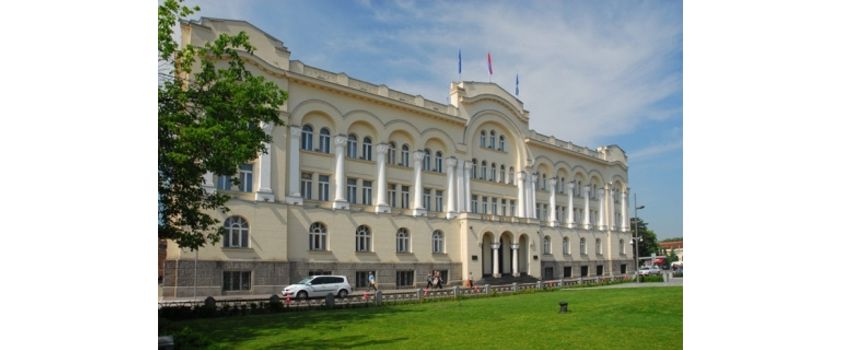2016 City budget was adopted on December 15 in the total of 128.270.000 BAM. Review of the budget and the drafting process reveals that two groups of problems GEA has been warning about for several years will be present in the next period as well and that no serious progress has been made on their resolution. The problems are:
- The budget is too heavily burdened by administration, which is reflected in enormous spending on wages as the biggest budget line.
- Low transparency and low level of citizen participation in the process of budget planning.
The budget is too heavily burdened by administration
The amount of wages to be paid from the City budget in 2016 has been increased in comparison with the previous year and it as high as 37 million BAM. The City Administration explains that this increase has occurred due to the obligation to pay for workers’ years of service allowance and the employment of staff at two new kindergartens. However, if we compare the 2016 City budget with the budget from 2007, we can see that spending on wages increased by 12,8 million BAM over this period, thus becoming the biggest budget line. It must be remembered that all this happened during the period when the total City budget decreased by 16,2 million BAM.
It can easily be concluded that significant cuts needed to be made within other budget lines. So, where the biggest cuts were made? Without a doubt, they were made on investments and maintenance, which have been decreased by 38,4 million BAM in comparison with 2007. After the adoption of the 2016 draft budget, mayor Slobodan Gavranovic stated the following: “We wish to have a budget devoted to economy and creation of a favorable business environment…” Data below show that this wish still has not been realized.
Values of the most important lines in the budget of the City of Banja Luka (2007 and 2016)
| 2007 | 2016 | 2007 | 2016 | ||
| In millions BAM | Structure in % | ||||
| Wages | 24,0 | 37,0 | 16,6% | 28,8% | |
| Goods and services | 40,5 | 25,6 | 28,0% | 19,9% | |
| Subsidies, grants and allocations | 16,6 | 19,4 | 11,5% | 15,1% | |
| Debt payment | 0,9 | 18,1 | 0,6% | 14,1% | |
| Investments and maintenance | 59,1 | 20,7 | 40,9% | 16,2% | |
| Other | 3,4 | 7,5 | 2,4% | 5,8% | |
| Total budgetary expenditure | 144,5 | 128,3 | 100,0% | 100,0% | |
Our previous announcement warning about the problematic structure of the city budget can be found here and here.
Low transparency and low level of citizen participation in the process of budget planning
How many persons receive salary from the Banja Luka City budget?
This is the question we asked the City Administration several times, but we still have not received an answer. At the beginning of 2014, we submitted an inquiry about the number of persons employed within all budget users of the City. After that, we submitted four more requests, but failed to obtain the requested data, which is against the valid Law on free access to information. Obviously, this is a problem of a lack of transparency, which has to be addressed and corrected. A more detailed description of this particular problem can be found here.
The way in which public hearings on the draft budget of the City have been held points to the absence of sincere will of the city authorities to encourage citizen participation more significantly during planning and preparation of the budget. Despite the declarative dedication of bodies of administration to use communication with citizens in order to reach the best possible budget document, there are many downsides proving otherwise. In 2013, GEA made an analysis of the process of adoption of the Banja Luka City budget and some of the findings are shown below:
| 0,2% of registered voters of the City participated in the public hearings on the 2012 draft budget. |
| 2 days was the timeframe within which citizens were able to familiarize themselves with the content of the Draft budget prior to the first public hearing session. |
| 4 days was the duration of all public hearings held in local communities. |
| In 5 local communities public hearing sessions were held, while the total number of local communities is 57. |
| 2 citizens submitted their written demands/initiatives to the City during the public hearing. |
| 13 days was the delay of the adoption of the Budget proposal according to the deadline set by the legislation. |
| 0 reports on the City budget execution have been published on the City website. |
The complete analysis can be found here.
Data we have managed to gather on the public hearing on the 2016 draft budget of the City prove nothing has changed significantly:
- 2 days was the timeframe within which citizens were able to familiarize themselves with the Draft budget (this is the period from the adoption of the Draft budget to the first public hearing session, which is a very short period of time left to citizens to even be informed on the holding of public hearing sessions in the first place);
- 6 days was the duration of the public hearing in local communities;
- In 3 local communities and in Banski dvor, public hearing sessions on the Draft budget were held.
Photo source: www.banjaluka.rs.ba

